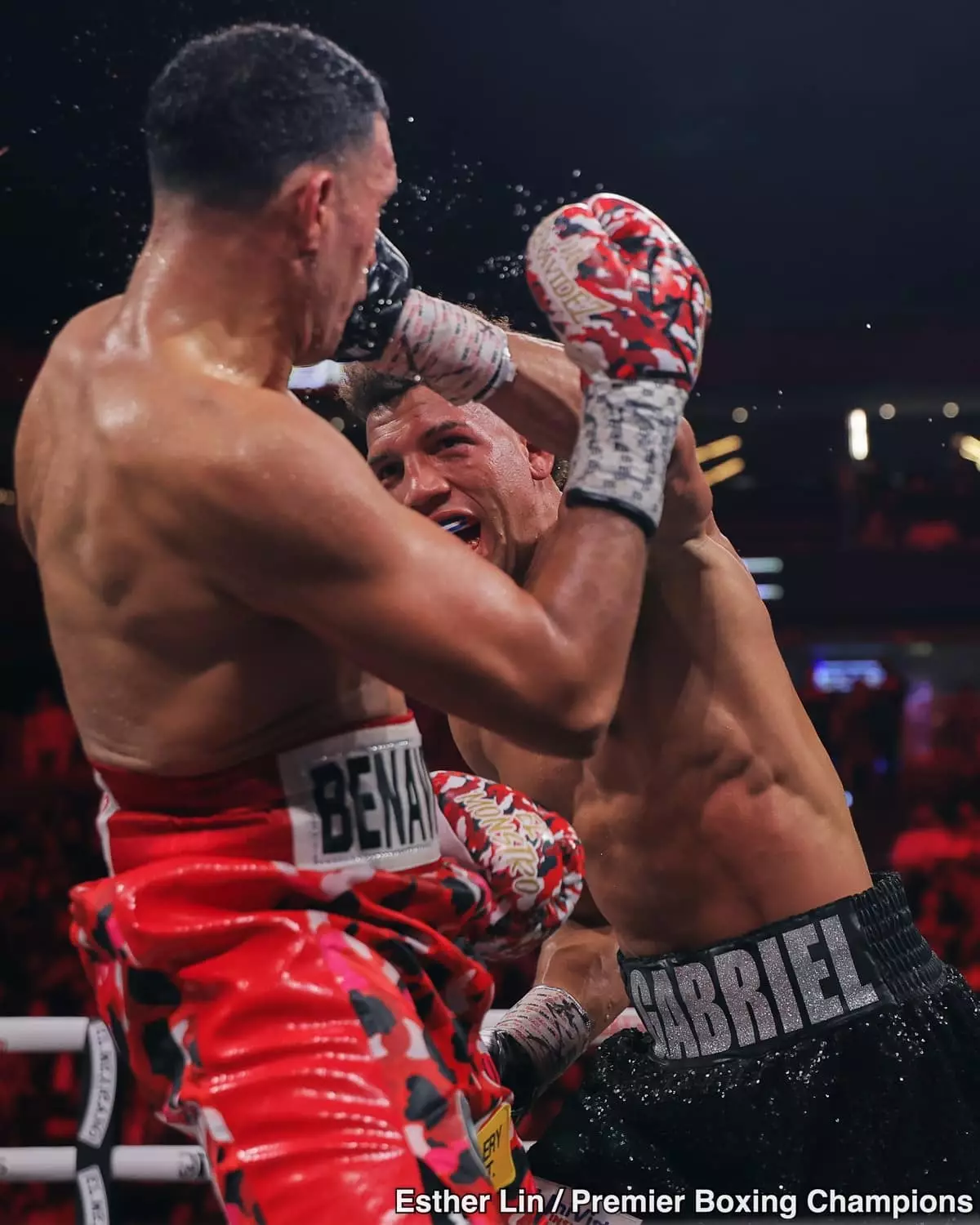The aftermath of David Benavidez’s recent unanimous decision victory against David Morrell has ignited discussions that transcend the standard boxing narrative. With a notable disparity between the fight’s visually interpretable competitiveness and the judges’ scores, the conversation around a potential rematch is garnering significant attention. Sampson Lewkowicz, the promoter for Benavidez, has insisted that if fans desire another showdown, he is on board.
During the bout held at the T-Mobile Arena in Las Vegas, Benavidez, despite securing a victory, emerged looking worse for wear. His face bore the telltale signs of a grueling match, marked with swelling and bruises that told the story of someone who had endured a tremendous onslaught. In stark contrast, Morrell, despite facing defeat, showcased an unscathed visage, leading many analysts and fans to question the legitimacy of the result. The visual disparity extends beyond surface impressions; it reflects the punches’ impact that each fighter delivered throughout the contest. Morrell’s shots appeared fundamentally more effective, carrying greater power and precision compared to Benavidez’s more slap-heavy delivery.
In scrutinizing the fight, one must consider how the aesthetics of boxing—particularly, the visible aftermath on a fighter’s face—can sway public perception and even influence the judges’ assessments. The scores reflected an overwhelming consensus in favor of Benavidez (115-111, 115-111, 118-108), which many deemed incongruent with the fight’s true nature. Morrell’s knockdown of Benavidez in the 11th round and his ability to trouble him with powerful strikes warranted a more equitable assessment.
The controversy continues with the judges’ scores, which many consider overly favorable to Benavidez. If the bout were scored under purely professional norms rather than amateur criteria, Morrell’s performance would likely have landed him a victory, especially when considering the effectiveness and timing of his shots. The bout’s contested nature adds a layer of complexity to the scoring, prompting fans and analysts to question whether the panels adequately captured the fight’s dynamics.
Additionally, the decision to penalize Morrell for striking after the bell has also stirred discord. Critics argue that Benavidez himself engaged in post-round striking, calling into question the referee’s decisions and their potential influence on the environment of the fight. These elements contribute to a swirling narrative of injustice that surrounds the judges’ decision.
The Rematch: A Potential Path Forward
The boxing community’s gazes now pivot towards the prospect of a rematch. Lewkowicz has opened the door to this possibility, stating, “If the people want to see it, we’ll do it again.” The emphasis on audience sentiment is critical here. Many believe that rematches, when sought by the fans, render greater excitement and a more substantial narrative, providing both fighters an opportunity to settle disputes that linger post-fight.
While Lewkowicz acknowledges that rematches can sometimes fail to live up to expectations—citing Benavidez’s previous encounter with Ronald Gavril—he remains optimistic. He anticipates that the compelling nature of their contest would compel a second meeting that fans would embrace.
In the broader boxing landscape, Benavidez’s future may hinge on the outcomes of upcoming fights, particularly the WBC’s developments with the Beterbiev vs. Bivol rematch. Should Bivol remain victorious, it opens an avenue that could sideline Benavidez momentarily while still balancing urgent public interest in securing a rematch with Morrell.
The aftermath of Benavidez vs. Morrell shakes the core of boxing’s competitive fabric, raising questions about scoring, performance evaluation, and the industry’s responsiveness to audience desires. Whether justice is restored in a rematch or through the uncovering of deeper narratives in the sport’s governance, the conversation promises to unfold with drama and intensity in future months.

